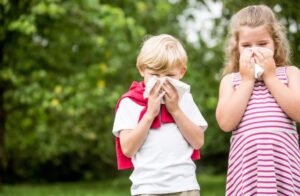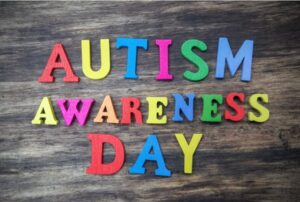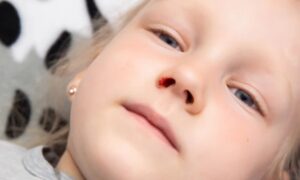When children develop cheilitis, or inflammation of the lips, their diet can play a crucial role in recovery. Certain foods contain nutrients that promote skin repair and strengthen the immune system, helping relieve symptoms like dryness and swelling. Here, I’ll share some foods that are effective for supporting children’s recovery from cheilitis, along with explanations for their benefits.
1. Foods Rich in Vitamin A
Vitamin A is essential for skin repair, helping skin cells regenerate and speeding up healing around the lips. If a child has recurring cheilitis, it might indicate a vitamin A deficiency.
- Carrots: I often serve carrot puree or steamed carrots to my child. They are high in beta-carotene, which the body converts into vitamin A. When softened and cut into small pieces, they’re easy for kids to eat.
- Pumpkin: Pumpkin is not only rich in vitamin A but also high in fiber and gentle on the stomach. Pumpkin puree or pumpkin porridge are both great options.
- Egg Yolks: Egg yolks are a good source of vitamin A. Including a boiled egg in breakfast provides a quick nutritional boost.
2. Foods Rich in Vitamin C
Vitamin C is a natural antioxidant that supports skin tissue repair and strengthens immunity, which can prevent and ease cheilitis symptoms. Kids usually enjoy vitamin C-rich fruits as well.
- Oranges: Oranges are sweet and high in vitamin C, but it’s best to limit acidic fruits to avoid irritating already inflamed lips.
- Strawberries: Strawberries are both tasty and high in vitamin C. I like to mix strawberry pieces with yogurt to make it fun for kids.
- Kiwis: Kiwis are a vitamin C “superfood.” Eating a soft, ripened kiwi is ideal for boosting immune health without irritating lips.
3. Foods with Healthy Fats
Healthy fats, especially Omega-3 fatty acids, help keep skin moisturized and prevent further cracking. During dry seasons, adding these healthy fats can help keep kids’ lips soft.
- Flaxseed Oil: Flaxseed oil is rich in Omega-3s, and I like to mix it into my child’s porridge or salad for an easy addition without a strong taste.
- Salmon: Salmon has both protein and healthy fats that benefit skin health. I cook it, break it into small pieces, and add it to rice.
- Walnuts: Walnuts contain plant-based Omega-3s and can be added to oatmeal or breakfast porridge, making it both nutritious and tasty.
4. Foods High in Zinc
Zinc is important for skin repair and helps speed up healing. A lack of zinc can lead to issues like cracked lips or increased susceptibility to infection.
- Lean Beef: Lean beef is a good source of zinc. I usually cook it and add small pieces to rice or vegetables, making it easy for kids to digest.
- Chicken: Chicken is also high in zinc and is mild in flavor. Chicken porridge or mini chicken meatballs are easy for kids to chew and swallow.
- Pumpkin Seeds: These little seeds pack a lot of zinc. Offering pumpkin seeds as a snack can be nutritious, though I serve them in small portions to avoid digestive upset.
5. Hydrating Foods and Water
Staying hydrated is key. Dehydration can contribute to lip dryness, so drinking water and consuming water-rich foods is essential for kids with cheilitis.
- Water: Simple yet effective. I encourage my child to drink plenty of water, especially during dry seasons, as it keeps the lips hydrated.
- Cucumbers: Cucumbers are high in water and have a naturally soothing effect. I slice them for my child to snack on or serve them in yogurt for a refreshing treat.
- Watermelon: Watermelon is great for hydration in the summer, and kids love the sweetness. It quickly replenishes moisture and soothes the mouth.
Conclusion
The foods listed above are beneficial for children with cheilitis, as they supply essential nutrients and support the lips’ natural healing process. In daily meals, I try to include foods rich in vitamins A, C, healthy fats, zinc, and water-rich items to support my child’s lip health. Daily care, like applying gentle lip balm and avoiding lip-licking, is also important.
With dietary adjustments and careful attention, I hope this can help improve kids’ cheilitis symptoms. If symptoms persist or worsen, it’s best to consult a doctor to ensure appropriate treatment.
References:
- Nutrition Journal
- International Food & Nutrition Journal
- Children’s Nutrition Guide
- Journal of Clinical Dermatology
- Skin Health













